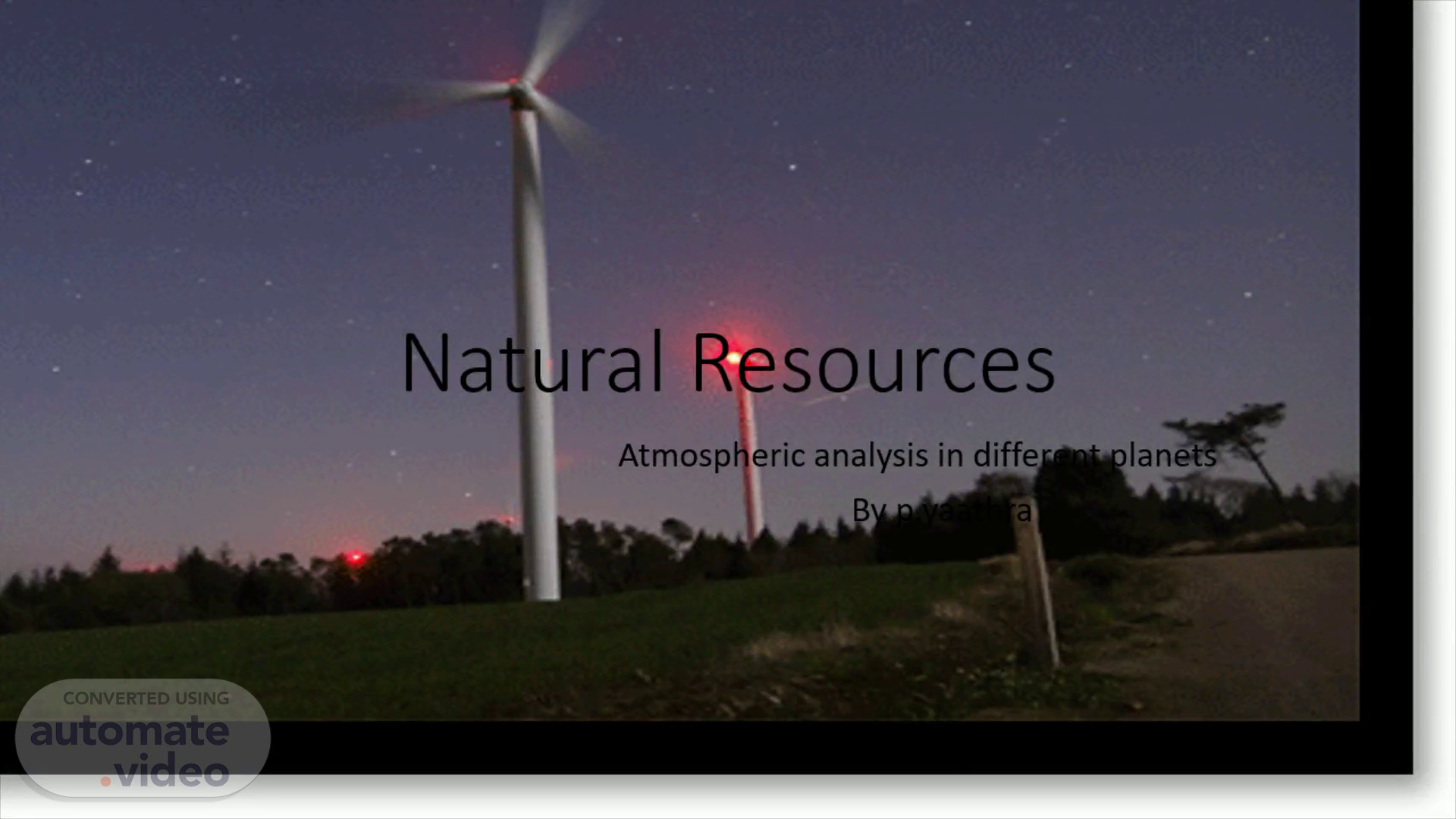Scene 1 (0s)
[Audio] Natural Resources Atmospheric analysis in different planets By p.yaathra.
Scene 2 (15s)
[Audio] INTRODUCTION NATURAL RESOURCES Natural resources are materials from the Earth that are used to support life and meet people's needs. Any natural substance that humans use can be considered a natural resource. Oil, coal, natural gas, metals, stone and sand are natural resources..
Scene 3 (39s)
[Audio] Space So what is space According to english we say it as a place or an area that is empty or not used. But according to science it is space is the vast 3-dimensional region that begins where the earth's atmosphere ends It is like a line which extends infinitely with no end to it Galaxy It consist of planets stars is called a galaxy. A galaxy is a system of solar systems and other stars. Galaxies, like solar systems, are held together by gravity. In galaxies, the solar systems are separated by vast sections of mostly empty space. The galaxy that contains the Earth and its solar system is called the Milky Way Universe The universe is all of space and time and their contents, including planets, stars, galaxies, and all other forms of matter and energy8 Our galaxy consist of 8 planets and one dr.wf planet called pluto.
Scene 4 (1m 49s)
[Audio] every planet in the Solar System has an atmosphere of one kind or another. And these range from incredibly thin and tenuous (such as Mercury's " exosphere") to the incredibly dense and powerful – which is the case for all of the gas giants. And depending on the composition of the planet, whether it is a terrestrial or a gas/ ice giant, the gases that make up its atmosphere range from either the hydrogen and helium to more complex elements like oxygen, carbon dioxide, ammonia and methane. our atmosphere is plentiful and life-sustaining. But what about the other planets of the Solar System lets see about it.
Scene 5 (2m 31s)
[Audio] Mercury Atmosphere Mercury is too hot and too small to retain an atmosphere. However, it does have a tenuous and variable exosphere that is made up of hydrogen, helium, oxygen, sodium, calcium, potassium and water vapor, with a combined pressure level of about 10- 14 bar ( one-quadrillionth of Earth's atmospheric pressure). It is believed this exosphere was formed from particles captured from the Sun, volcanic outgassing and debris kicked into orbit by micrometeorite impacts..
